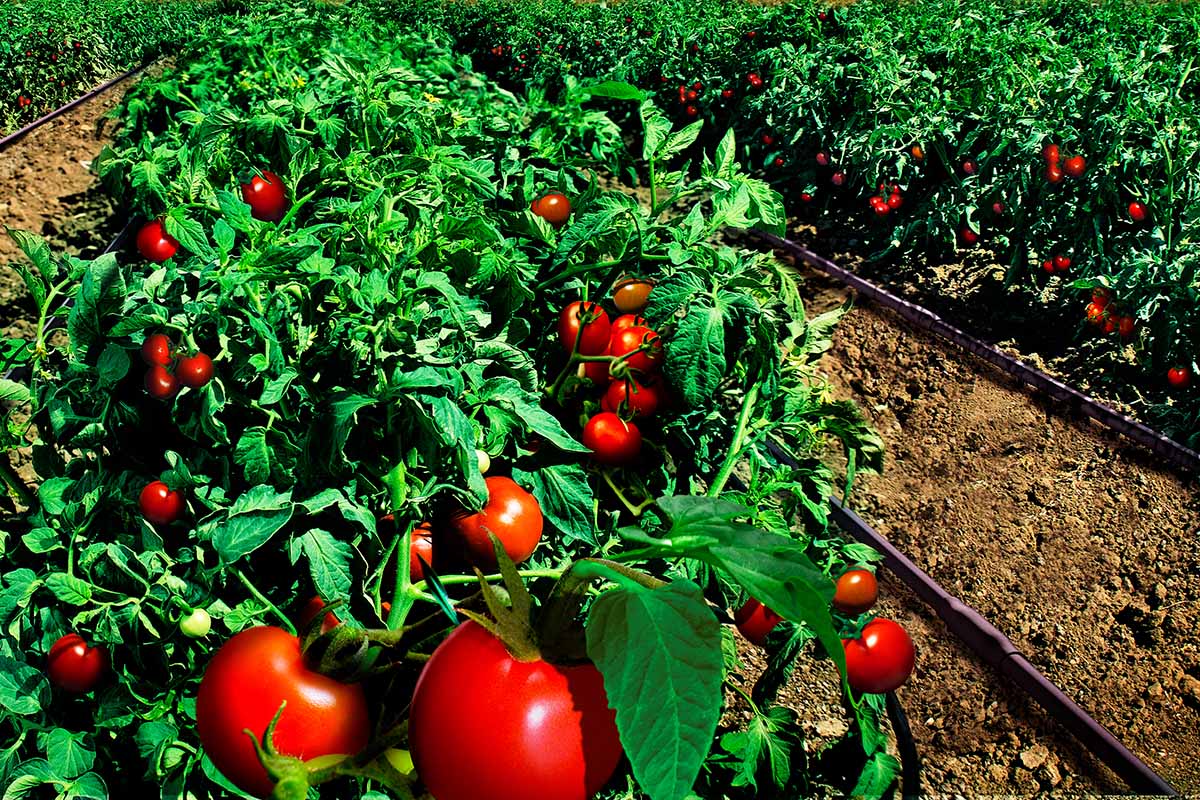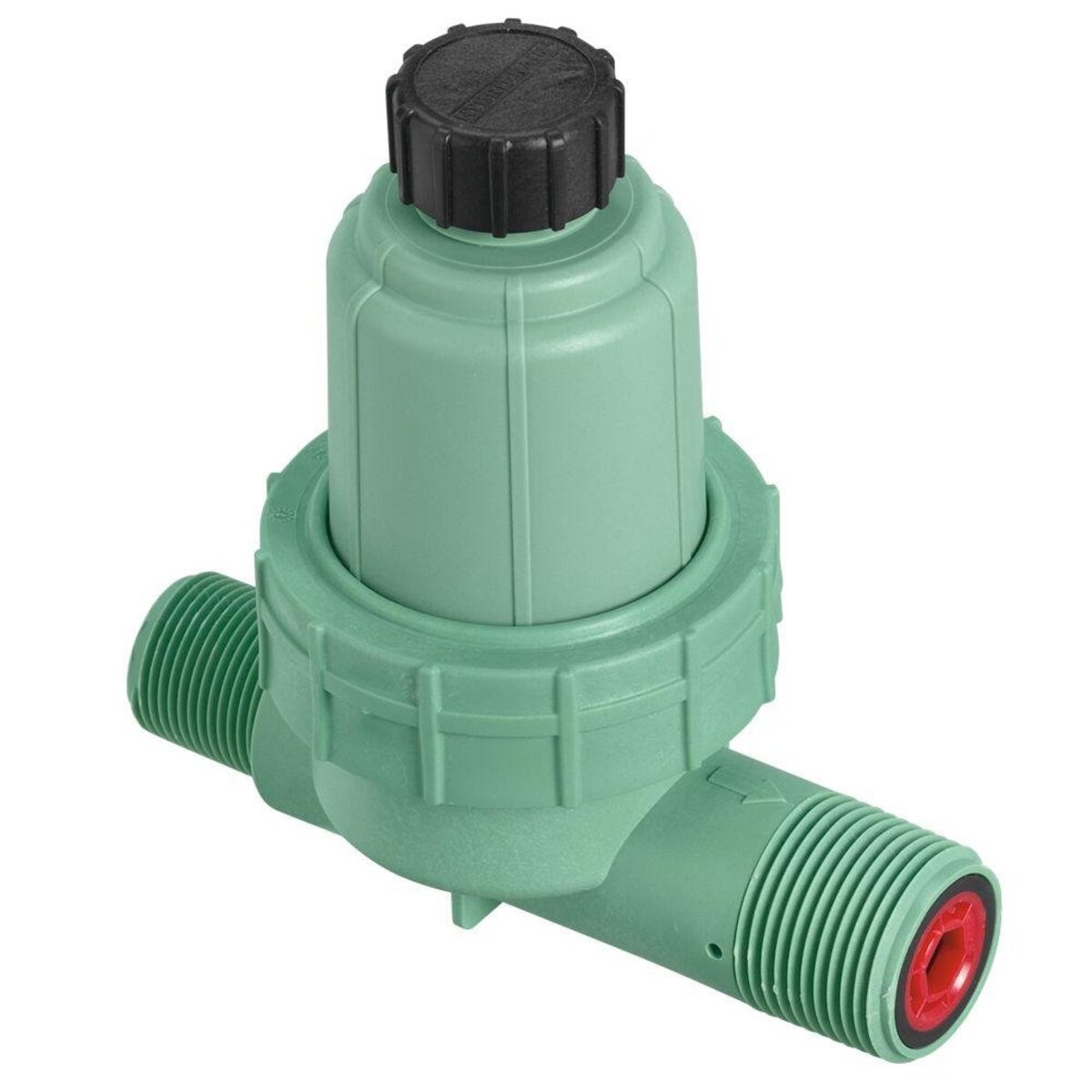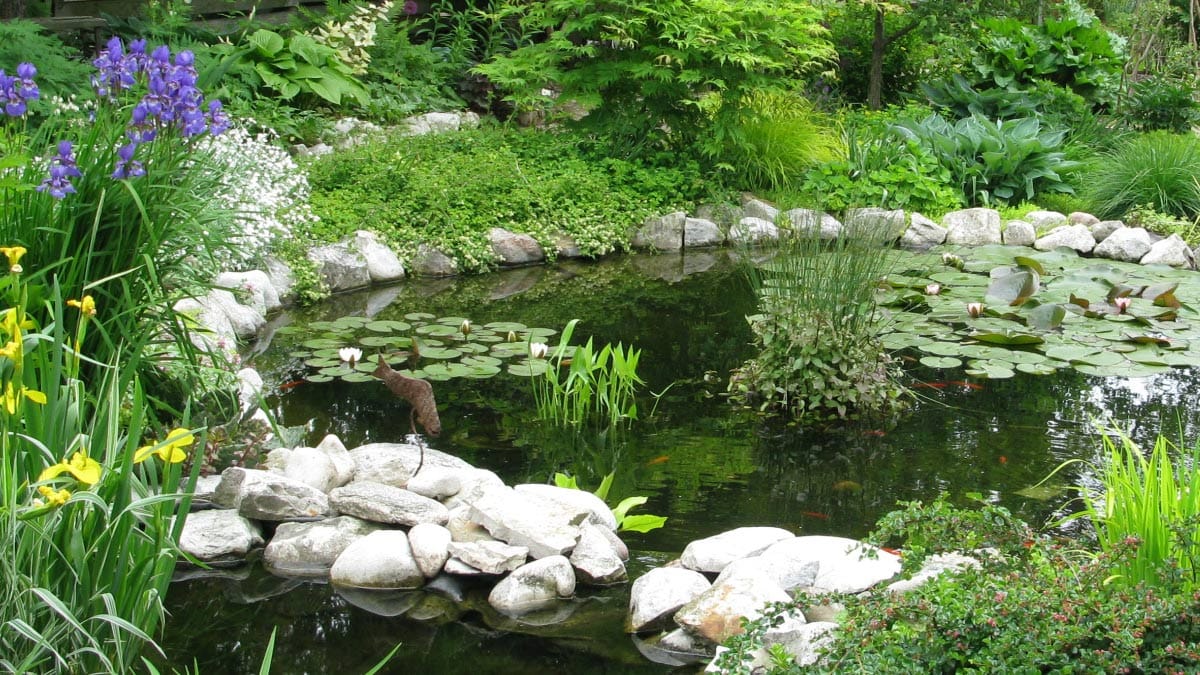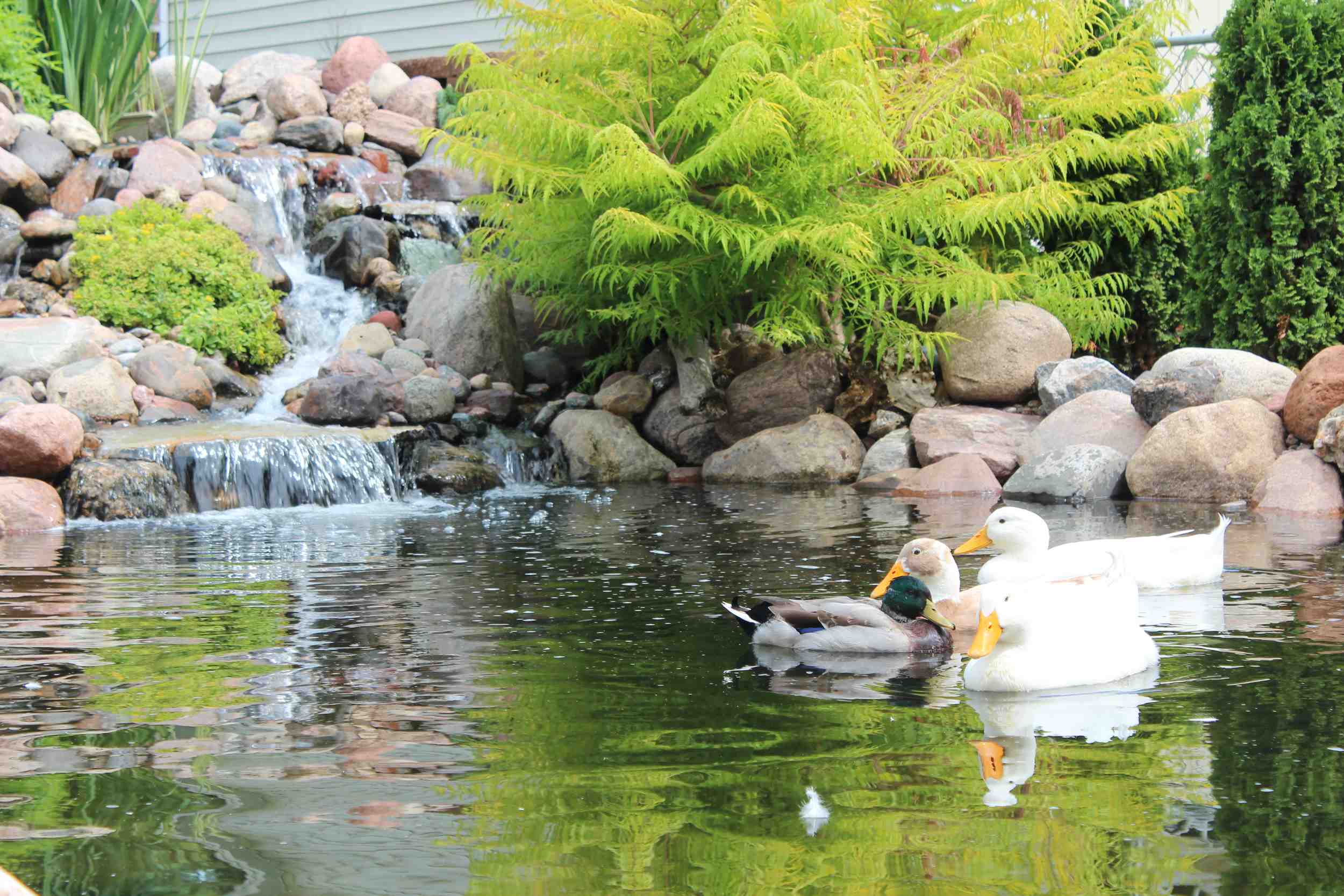Home>Gardening Techniques>DIY Projects>How To Filter Pond Water For Irrigation
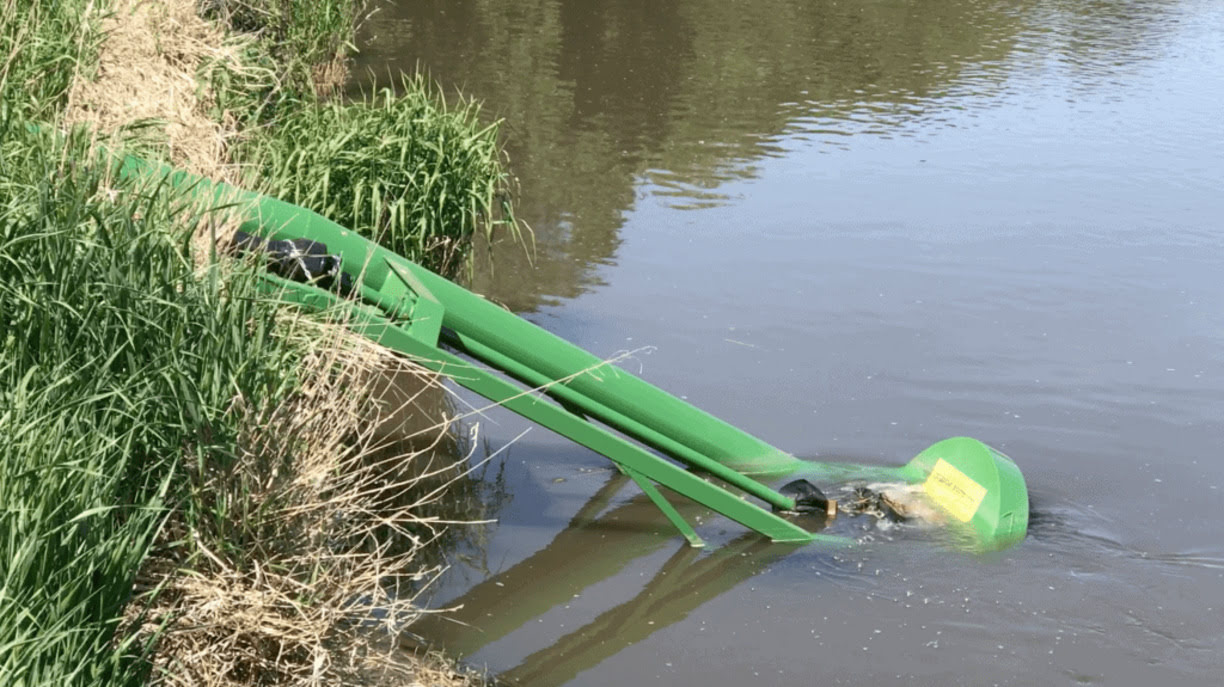

DIY Projects
How To Filter Pond Water For Irrigation
Modified: January 22, 2024
Learn how to filter pond water for irrigation with these DIY projects. Improve the quality of your water source for effective irrigation.
(Many of the links in this article redirect to a specific reviewed product. Your purchase of these products through affiliate links helps to generate commission for Chicagolandgardening.com, at no extra cost. Learn more)
Table of Contents
Introduction
Having a pond on your property can provide many benefits, from enhancing the aesthetics of your landscape to supporting a thriving ecosystem. However, if you’re looking to use pond water for irrigation purposes, it’s essential to ensure that the water is clean and free from debris and contaminants. This is where a pond water filter comes into play.
A pond water filter is a device that helps remove impurities and maintain the water quality in your pond. By filtering the water, you can reduce the risk of clogged irrigation systems, improve the health of your plants, and promote better water circulation in your pond. With the right filter in place, you can use the water from your pond for watering your garden, lawn, or any other irrigation needs.
In this article, we will explore different types of pond water filters, their functionalities, and how to choose the right one for your irrigation needs. We will also discuss the installation, setup, and maintenance of a pond water filter. By the end, you will have a comprehensive understanding of the benefits of using a pond water filter for irrigation and be equipped with the knowledge to make informed decisions about implementing this system on your property.
Types of Pond Water Filters
When it comes to choosing a pond water filter for irrigation, there are several types available on the market. Each type of filter operates differently and targets specific impurities in the water. Here are the three main types of pond water filters you can consider:
- Mechanical Filters: Mechanical filters are designed to physically trap and remove solid particles from the water. These filters typically consist of a series of screens or meshes that capture debris such as leaves, twigs, and algae. They are highly effective in removing visible particles and preventing clogs in irrigation systems.
- Biological Filters: Biological filters utilize beneficial bacteria to break down organic matter and convert harmful substances into non-toxic compounds. These filters are commonly used in conjunction with mechanical filters to provide a thorough cleaning of the water. The bacteria colonize on filter media or inside the filter unit and actively work to maintain a balanced ecosystem in the pond.
- Chemical Filters: Chemical filters utilize special filter media or additives to remove contaminants and impurities from the water. Activated carbon is a commonly used media that effectively removes harmful substances such as chlorine, pesticides, and heavy metals. Chemical filters are often used as a supplementary filtration method to enhance the water quality.
Each type of filter has its own advantages and limitations. Mechanical filters are great for removing visible debris, but they may require frequent cleaning to prevent clogs. Biological filters excel at maintaining a healthy pond ecosystem, but they may take some time to establish and start functioning optimally. Chemical filters provide quick results in terms of water clarity, but they may require regular media replacement to maintain effectiveness.
When selecting a pond water filter for irrigation, it’s important to consider the specific needs of your pond and the level of filtration required. Assess the size of your pond, the amount of debris it accumulates, and the water quality you are aiming for. This will help you determine the right combination of filter types and specifications that suits your irrigation needs.
Mechanical Filters
Mechanical filters are commonly used in pond water filtration systems to remove visible debris and solid particles from the water. These filters work by physically trapping and collecting particles as the water passes through them. They are highly effective in preventing clogs in irrigation systems and maintaining water clarity.
There are different types of mechanical filters available, including screens, meshes, and filter pads. Screens consist of tightly woven material or perforated plates that allow water to pass through while trapping debris. Meshes, on the other hand, contain fine openings that catch particles of various sizes. Filter pads are made of dense fibers that create a barrier, capturing larger particles and preventing them from entering the irrigation system.
To choose the right mechanical filter for your pond irrigation needs, consider the flow rate, particle size, and maintenance requirements. Different filters have varying flow rates, which determine the speed at which water passes through. It is important to select a filter with an adequate flow rate to ensure efficient filtration without causing a backflow or slowing down the irrigation process.
Particle size is another important factor to consider when selecting a mechanical filter. If your pond accumulates large debris such as leaves or twigs, opt for a filter with larger openings or a coarse mesh to prevent clogs. For smaller particles like algae or sediment, a filter with a finer mesh or denser filter pad will be more effective.
Maintenance is a crucial aspect of mechanical filters. Over time, the collected debris can build up and reduce the filter’s effectiveness. Regular cleaning and maintenance are necessary to remove the trapped particles and ensure consistent filtration performance. Some mechanical filters have self-cleaning mechanisms or backwashing features that facilitate easy maintenance. It is important to follow the manufacturer’s guidelines for cleaning and maintenance to keep the filter in optimal condition.
Mechanical filters can be used as standalone filtration systems or in combination with other types of filters, such as biological or chemical filters, for a more comprehensive water cleaning process. They not only help improve the clarity and quality of pond water but also provide a cleaner source of water for irrigation purposes.
Biological Filters
Biological filters are an essential component of a pond water filtration system, working to improve water quality by promoting the growth of beneficial bacteria. These bacteria play a crucial role in breaking down organic matter and converting harmful substances into non-toxic compounds, creating a balanced and healthy ecosystem in the pond.
Biological filters typically consist of filter media, such as bio balls, ceramic rings, or filter sponges, which provide a surface area for bacterial colonization. As water passes through the filter media, the beneficial bacteria attach to the surfaces and form a biofilm. This biofilm acts as a biological filter, removing ammonia, nitrites, and nitrates, which are harmful to aquatic life.
One of the key benefits of biological filters is their ability to remove harmful waste products produced by fish, such as ammonia. Ammonia is highly toxic to fish and other pond inhabitants, and without proper filtration, its build-up can lead to poor water quality and health issues. Biological filters help convert ammonia into nitrites and further into nitrates, which are less harmful to the aquatic ecosystem.
While mechanical filters primarily focus on removing visible debris, biological filters play a crucial role in maintaining a balanced and healthy pond ecosystem. They help to establish a natural cycle of bacteria, plants, and fish that work together to keep the water clean and clear. In addition to waste breakdown, these filters promote the growth of beneficial oxygenating plants and support the overall ecological balance.
It’s important to note that the effectiveness of a biological filter depends on establishing and maintaining its bacterial colonies. The colonization process takes time, and it’s recommended to allow the filter to mature before relying solely on its filtration capabilities. Regular maintenance, such as monitoring water parameters and occasional cleaning of the filter media, will promote optimal bacterial growth and filtration efficiency.
Biological filters can be used in conjunction with mechanical filters to create a comprehensive pond water filtration system. While mechanical filters remove larger debris, biological filters work to break down organic waste and maintain water parameters. Together, they provide efficient and effective filtration, ensuring the health and vitality of your pond and providing clean and safe water for irrigation purposes.
Chemical Filters
Chemical filters are a valuable component of a pond water filtration system, helping to remove contaminants and impurities that may not be eliminated through mechanical or biological filtration alone. These filters utilize special filter media or additives to target specific substances in the water, resulting in cleaner and clearer pond water.
One commonly used chemical filter media is activated carbon. Activated carbon is highly effective in removing chemicals, toxins, odors, and heavy metals from the water. It works through a process called adsorption, where the impurities in the water adhere to the carbon surface. As the water passes through the filter, the activated carbon captures and traps these impurities, resulting in improved water quality.
Chemical filters can be used as a standalone filtration method or in conjunction with mechanical and biological filters for a more complete water cleaning process. By incorporating a chemical filter, you can address specific water quality issues or target particular substances that may be present in your pond water.
It is important to note that chemical filters typically require regular maintenance and media replacement. The effectiveness of the activated carbon diminishes over time as it becomes saturated with impurities. Therefore, it’s crucial to follow the manufacturer’s guidelines and replace the filter media at the recommended intervals to maintain optimal filtration performance.
When selecting a chemical filter for your pond water filtration system, consider the specific contaminants or impurities you want to target. Different filter media or additives may be more effective at removing certain substances than others. Additionally, consider the size and flow rate of the filter to ensure that it can effectively handle the volume of water in your pond.
Chemical filters can significantly improve the clarity and quality of pond water by removing unwanted substances that may affect the health of plants, fish, and other aquatic organisms. By incorporating a chemical filter into your pond water filtration system, you can ensure that the water used for irrigation purposes is clean, safe, and free from harmful contaminants.
Choosing the Right Filter for Irrigation
Selecting the right pond water filter for irrigation purposes is crucial to ensure optimal water quality and the efficiency of your irrigation system. Consider the following factors when choosing a filter:
- Pond Size: The size of your pond will determine the capacity of the filter you require. A larger pond will likely need a filter with a higher flow rate and a larger surface area to effectively handle the volume of water.
- Water Volume and Flow Rate: Consider the amount of water you will be using for irrigation and the flow rate required to meet your watering needs. Ensure that the filter can handle the desired flow rate without causing a backflow or reducing the irrigation system’s effectiveness.
- Types of Contaminants: Assess the specific contaminants or impurities present in your pond water. If you have a lot of debris, a mechanical filter would be ideal. For organic waste and ammonia, a biological filter would be beneficial. If you need to remove chemicals or odors, a chemical filter with activated carbon may be necessary.
- Maintenance and Cleaning: Consider the maintenance requirements of the filter. Some filters may require more frequent cleaning or media replacement, while others may have self-cleaning mechanisms. Find a filter that aligns with your preferred level of maintenance commitment.
- Budget: Filters come in various price ranges. Determine your budget and look for options that provide good filtration performance within your financial constraints. Remember to consider long-term costs, such as media replacements for chemical filters.
It’s essential to assess your specific pond and irrigation needs to determine which type of filter or combination of filters will best suit your requirements. In most cases, using a combination of mechanical, biological, and chemical filters will provide the most comprehensive water cleaning and filtration process.
Consulting with a professional or seeking advice from a reputable supplier can also help you make an informed decision. They can provide insights into the best filters for your specific pond and irrigation setup, taking into account factors such as local water conditions and the types of plants and crops you are irrigating.
Remember to regularly monitor and test your pond water to assess the effectiveness of your filter and ensure that water quality remains at optimal levels. With the right filter in place, you can effectively use your pond water for irrigation, promoting healthy plant growth and conserving precious freshwater resources.
Installation and Setup of Pond Water Filter
The proper installation and setup of a pond water filter are essential to ensure its smooth operation and effective filtration. Follow these steps to install and set up your pond water filter:
- Choose the Filter Location: Select a suitable location for your filter, near the pond or within easy reach of the irrigation system. Ensure that there is enough space to accommodate the filter and its necessary connections.
- Prepare the Filter Site: Clear the area of any debris or vegetation that may hinder the installation process. Level the ground, if necessary, to provide a stable base for the filter.
- Connect the Filter Inlet and Outlet: Connect the inlet and outlet pipes of the filter to the water source and irrigation system, respectively. Use appropriate connectors, fittings, and clamps to ensure a secure and leak-free connection.
- Install the Filter Media: If your filter requires media, such as filter pads or bio balls, carefully place them in the filter according to the manufacturer’s instructions. Ensure that the media is evenly distributed and does not obstruct the water flow.
- Set Up additional Components: Depending on the type of filter, additional components may be required, such as a pump or UV sterilizer. Install these components as per the manufacturer’s guidelines, ensuring proper connections and alignment.
- Prime the Filter: Once the filter is set up, prime the system by allowing water to flow through it for a few minutes. This helps remove any impurities or air pockets that may have accumulated during the installation process.
- Test the Filter: After priming the filter, test its functionality by turning on the water source or irrigation system. Check for any leaks, unusual noises, or uneven water flow. Adjust the filter or connections, if necessary, to achieve optimal performance.
It’s important to follow the manufacturer’s instructions throughout the installation process to ensure proper setup and operation of the filter. Consulting the user manual or seeking professional guidance can also provide valuable insights and ensure that the filter is installed correctly.
Regularly monitor the filter’s operation and performance to ensure that it is effectively filtering the pond water. Make any necessary adjustments or maintenance, such as cleaning or replacing filter media, according to the manufacturer’s recommendations.
Remember that the installation and setup process may vary depending on the specific type and model of the pond water filter. Always refer to the manufacturer’s guidelines for detailed installation instructions and specifications.
Maintenance and Cleaning of Pond Water Filter
Regular maintenance and cleaning of your pond water filter are essential to ensure its optimal performance and longevity. By keeping the filter clean and well-maintained, you can ensure that it effectively removes impurities from the water, maintaining water clarity and keeping your irrigation system functioning at its best. Follow these maintenance guidelines for your pond water filter:
- Inspect Regularly: Regularly inspect the filter for any signs of clogs, damage, or deterioration. Look for debris accumulation, algae growth, or any obstructions that may hinder the filter’s performance.
- Clean the Filter Media: Clean the filter media according to the manufacturer’s recommendations. Mechanical filters may require more frequent cleaning, especially if they are prone to getting clogged with debris. Use a brush or hose to wash away the accumulated debris or rinse the media in clean water.
- Backwash if Needed: If your filter has a backwash feature, use it periodically to remove accumulated debris and sediment from the media. Backwashing reverses the water flow through the filter, flushing out trapped particles and ensuring optimal filtration efficiency.
- Replace Filter Media: Over time, the filter media may become worn out or lose its effectiveness. Replace the media as recommended by the manufacturer or when you observe a significant decrease in filtration performance.
- Clean Inlet and Outlet Pipes: Check the inlet and outlet pipes for any obstructions or build-up. Remove any debris, leaves, or algae that may impede water flow and affect the filter’s efficiency.
- Monitor Water Parameters: Regularly test the water quality parameters such as pH, ammonia, nitrates, and nitrites to ensure that the filter is maintaining a balanced ecosystem. If any parameters are outside the desired range, investigate possible issues with the filter and take appropriate measures.
- Inspect and Clean Seals and O-Rings: Inspect the seals and O-rings of the filter for any damage or wear. Clean them regularly and replace them if necessary to prevent leaks and maintain a secure connection.
It is important to follow the manufacturer’s guidelines for maintenance and cleaning specific to your pond water filter. Manufacturers may provide detailed instructions on cleaning frequency, recommended cleaning methods, and replacement schedules for filter media and components.
By adhering to regular maintenance and cleaning routines, you can ensure that your pond water filter operates efficiently, prolonging its lifespan and preserving the quality of water for irrigation purposes. Maintaining a clean and well-functioning filter will lead to healthier plants, less maintenance on the irrigation system, and better overall water quality in your pond.
Benefits of Using Pond Water Filter for Irrigation
Using a pond water filter for irrigation offers several significant benefits that enhance the efficiency, sustainability, and overall health of your irrigation system and plants. Here are some key advantages:
- Improved Water Quality: A pond water filter removes debris, sediment, and contaminants, ensuring that the water used for irrigation is clean and free from harmful substances. This helps prevent clogs in your irrigation system and promotes healthier plant growth.
- Conservation of Freshwater Resources: By utilizing filtered pond water for irrigation, you reduce your dependency on freshwater sources, such as municipal water supplies. This promotes water conservation and helps preserve this precious resource.
- Sustainable Irrigation Solution: Pond water filters provide an eco-friendly alternative for irrigation purposes. By recycling and using water from your pond, you minimize the need for additional water sources and reduce the environmental impact of your irrigation practices.
- Cost Savings: Utilizing pond water for irrigation can result in significant cost savings by reducing or eliminating the need for purchasing and using treated water from external sources. Additionally, pond water filters promote efficient water distribution, reducing water waste and lowering water bills.
- Promotion of Plant Health: Clean and filtered pond water enhances the health and resilience of your plants. By removing impurities and providing a nutrient-rich water source, plants thrive and exhibit improved growth, increased yields, and enhanced resistance to diseases and pests.
- Enhancement of Pond Ecosystem: Implementing a pond water filter contributes to the overall health and balance of your pond ecosystem. The filter removes excessive nutrients, organic waste, and harmful substances, preventing issues like algae bloom and maintaining optimal water conditions for aquatic life.
- Flexibility in Watering Schedule: With a pond water filter, you have greater control over your irrigation schedule. You are not reliant on external water sources, allowing you to adjust your watering based on plant needs, weather conditions, and water availability.
- Support for Sustainable Landscaping: Using pond water for irrigation aligns with sustainable landscaping practices. It enables the conservation of water resources, reduces reliance on chemical fertilizers, and promotes the growth of native plant species, fostering a more eco-friendly and biodiverse landscape.
Overall, utilizing a pond water filter for irrigation benefits both your garden and the environment. It provides clean and sustainable water for nourishing your plants while promoting responsible water usage and conservation. By incorporating a pond water filter into your irrigation system, you can enjoy the advantages of improved plant health, cost savings, and a greener approach to landscaping.
Conclusion
Incorporating a pond water filter into your irrigation system offers numerous benefits that enhance both the efficiency and sustainability of your watering practices. By removing debris, sediment, and contaminants from the pond water, these filters ensure a clean and high-quality water source for your irrigation needs. This promotes healthier plant growth, reduces clogs in your irrigation system, and ultimately leads to cost savings and water conservation.
Mechanical filters effectively trap visible particles, while biological filters promote a balanced ecosystem by breaking down organic waste. Chemical filters target specific contaminants, such as chemicals and odors, for comprehensive water purification. Selecting the right filter for your pond’s size, water flow rate, and specific water quality needs ensures optimal filtration performance.
Proper installation and maintenance are key to maximizing the efficiency of your pond water filter. Regular inspection, cleaning of filter media, and monitoring of water parameters are essential to keep the filter functioning at its best. This ensures that your plants receive clean water and that your pond ecosystem remains healthy.
By utilizing pond water for irrigation, you decrease your dependence on freshwater sources, reduce water waste, and contribute to sustainable landscaping practices. This not only benefits your wallet but also benefits the environment by conserving precious water resources and preserving the ecological balance of your pond.
Overall, implementing a pond water filter for irrigation is a smart and eco-friendly choice. It improves the quality of your water supply, promotes plant health, and reduces the impact on natural resources. Consider installing a pond water filter on your property and reap the rewards of cleaner water, greener landscapes, and sustainable irrigation practices.

